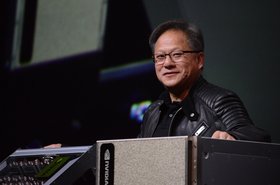As we plan for the year ahead I believe we will see greater changes within the sector, many of which will be influenced by the innovation of hyperscale providers, high performance computing (HPC) technologies and by the OCP-Ready™ colocation data centres supporting them.
The arrival of eastern hyperscalers
Today London is one of the largest data center hubs in the world, attracting some of the tech sector’s most influential brands to the country. Over the past decade the UK colocation market has become increasingly dominated by the US hyperscale providers, and whilst these companies will continue to build on their established footprints, in 2021 we will also see further inroads made by Chinese providers, such as Tencent and Alibaba.
As a key global destination for data center and cloud services, the UK offers a strategic gateway to Europe, yet the Eastern hyperscale communities have traditionally been under-served here.
The hyperscaler prerequisites of space to scale, abundant renewable power and access to market-leading cloud connectivity will generate strong interest for providers offering Built-To-Suit services. Operators who can deliver scalable, secure bespoke facilities, with an established talent pool and experienced engineering team offer Eastern cloud service providers all of the key ingredients to truly gain a hold in the UK market
Creation of new availability zones
The London colocation market has seen continued expansion, investment, and acquisition in recent years, most of which has largely been focused on the established data center hubs and availability zones of Slough and Docklands. As these locations have become increasingly saturated and subsequently constrained in terms of suitable land and power, colocation and hyperscale providers are now being forced to look further afield to meet their growing requirements.
Google recently announced that it has acquired a 33-acre site to the north of London for future development, and to the east of the city Kao Data offers a location for high performance colocation workloads for the Life Science and research clusters of Cambridge, as well as the surrounding UK Innovation Corridor.
With the need for data centers and more importantly, the services they provide, showing no sign of abating. CBRE, for example, predicts that 2021 will be a record year for new supply, with 400MW already in or through planning for development and 85MW scheduled to come online across FLAP. As such I anticipate that a new availability zone will emerge, where east London and beyond will become a strategic location for high performance colocation.
The GPU race to ARMs
Throughout 2020 HPC usage within bioinformatics and pharma has surged, and the UK has once again proved its metal as one of the world’s leading tech hubs. In fact, no greater influence has accelerated or impacted the sector this year than that made by HPC and intensive computing.
The work of Pfizer, AstraZeneca and of the research universities supporting them has been paramount, and will play key roles in 2021.
Furthermore, through their acquisition of ARM, Nvidia have chosen Cambridge as the location of their efforts to develop an AI center of excellence. As we look forward, I believe we’ll see an arms race in the GPU market, where Nvidia’s new DGX technologies, and a host of other manufacturers’ new announcements such as Supermicro, will continue to offer increased performance benefits for end-users at a lower cost.
HPC will also no longer be seen as simply a biotechnology, research or financial markets tool. The emergence of new technologies such as the Nvidia DGX Station A100, are making advanced processing power and the use of AI applications more easily available as companies look to incorporate these into their digital strategies.
The convergence of OCP-Ready and HPC-Ready data centers
Today it is extraordinary how AI, GPU and CPU technologies are influencing data center designs. In future, I believe that facilities will be judged by their abilities to support HPC-Ready infrastructure for intensive compute.
HPC data centers must offer customizable architectures, abundant power within typically +30kW racks and have the capability to remove the heat generated by the servers via the greater efficiencies offered by liquid cooling – all while supporting the increased floor loading requirements! These bare the hallmarks of OCP-Ready data centers, a term that has become synonymous for facilities that accommodate intensive computing in highly efficient, application specific and flexible environments.
Today HPC and AI organisations also require the expertise of operators who truly understand their needs, and who can implement the specific technology topography that they require. I believe those teams who have the right engineering expertise, alongside facilities built to standards of technical excellence, will find great success in 2021. The convergence of OCP-Ready and HPC-ready facilities within our sector has only just begun to emerge. Looking forward, long may it continue.





